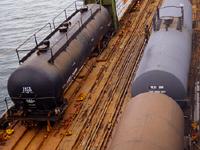
|
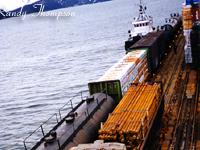
|
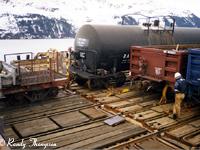
|
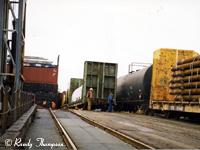 |
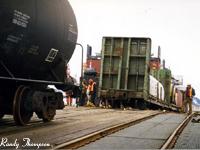 |
 |
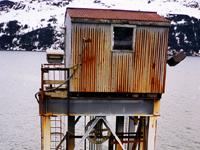
|

|

|

|
 |
 |
 |

|
Above photos are of the unloading of the barge Santa Bonita on April 22, 1999 (early morning, cold, wet and windy) in Whittier, Alaska.
The barge slip is like a bridge, one end is on the land side and the other end rests on the edge of the barge. There are three sets of tracks on it. When the tide is just right the ARRC starts unloading the barge. The ARRC won't put the locomotives on the slip, the weight of them will make the barge sink down a little bit. So they put in the idler flats. They are just spacer cars between the freight cars and the locomotives. They usually have four or five idlers, but can use only three. The barge slip is about four to five cars in length. Now when the ARRC gets locomotives or sends out locomotives, they are put on the barge and have to be transported over the barge slip. The tide has to be just right so the slip is level. If the tide is too high or low, it creates an angle on the slip and the locomotives could scrape their fuel tanks as they go.
The two towers by the barge slip are the slip towers that have the cables and counter weights on them. A special case occurs when the barge has seven (Canadians) or eight (Crowley) tracks on it. To allow access to the other half of the barge, it must be moved. A couple of years ago, the ARRC was working a seven rail barge. When the barge was moved to get to the other tracks, the slip wasn't resting on the barge. The weight of the empty flatcars caused the slip to collapse into the water.
Thanks to Robert Krol for providing the above information
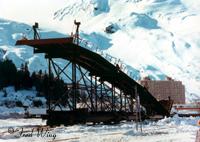 |
 |
In the late 1980s, the railroad used this special ramp to unload both the top and bottom levels of barges.
In August 2005 I got to view an entire barge unloading. You can read more about it in day 3 of my online journal and by viewing the following videos:
Here are some examples of forklifts loading containers onto a barge (10/06):
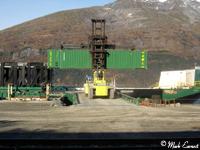 |
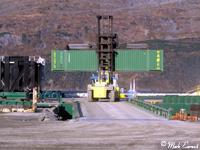 |
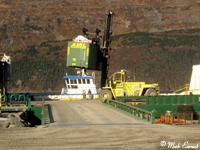 |
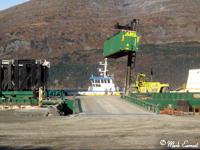 |
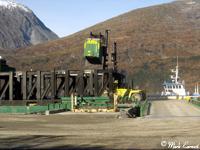 |
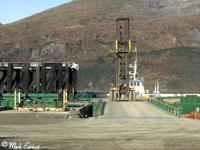 |
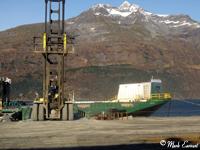 |
 |
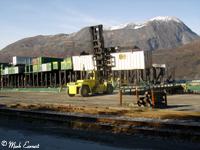 |
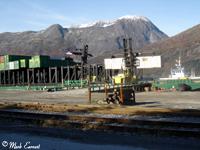 |
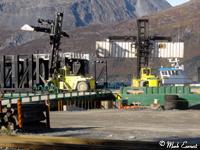 |
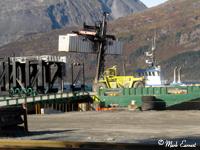 |
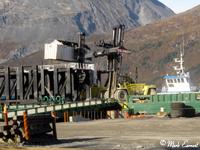 |
Page was created on 12/1/99 and last updated11/15/06